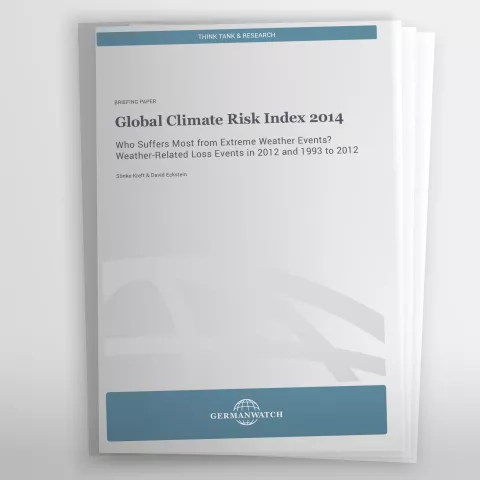
The Global Climate Risk Index 2014 analyses to what extent countries have been affected by the impacts of weather-related loss events (storms, floods, heat waves etc.). The most recent data available—from 2012 and 1993–2012—were taken into account. The countries affected most in 2012 were Haiti, the Philippines and Pakistan. For the period from 1993 to 2012 Honduras, Myanmar and Haiti rank highest.
This year's 9th edition of the analysis reconfirms that according to the Climate Risk Index less developed countries are generally more affected than industrialised countries. Regarding future climate change, the Climate Risk Index may serve as a red flag for already existing vulnerability that may further increase in regions, where extreme events will become more frequent or more severe due to climate change. While some vulnerable developing countries are frequently hit by extreme events, there are also some others where such disasters are a rare occurence.
The climate summit 2013 held in Warsaw, Poland, is a defining moment and should mark a turning point for the international community by starting immediately to scale-up its response in addressing climate change and the increasing loss and damage. The window of time to put the world on track to stay below the 2°C guardrail is closing rapidly, and Warsaw must trigger new dynamics.




